Cold hot therapy
Cold hot therapy is more effective and safer than anti inflammatory drugs
So, when would you use heat and ice?
And in fact, usually what is best is a mixture of heat and ice. Actually vice versa. First ice followed by moist heat.
This page was last updated by Dr Barrie Lewis on 9th July, 2021.
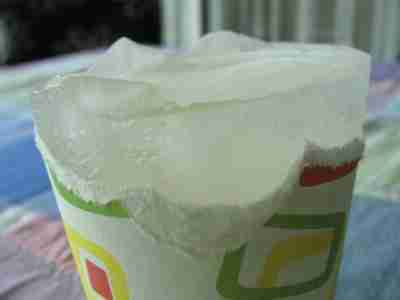
For example,
PATELLO FEMORAL PAIN
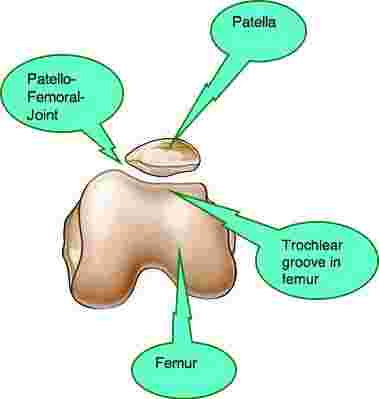
You are walking down the garden, and you stumble over an unseen branch, and fall, hard, straight onto your patella. Ouch. The force drives your kneecap hard up against the cartilage of the underlying thighbone.
Normally the kneecap slides neatly up and down in the trochlear groove but if it is forcibly shoved against the sides of the groove the cartilage will be injured. It's lined with super very smooth cartilage; in fact the thickest hyaline cartilage in the body because the forces on the kneecap are enormous.
So, you have an acute injury to the cartilage under the patella. The knee swells, and you may well also have a nice bruise; it's not likely to fracture the patella but like any bone it can indeed be broken. So, because it's acute, you would use ice therapy.
Yes, that's a cartilage defect in the femoral condyle that you've probably spotted too. It's the beginning of osteoarthritis of the knee, that which awaits virtually all obese folk, especially women because of something called the queue angle that we won't go into today. Apologies for going on about obesity. It will cause you pain, lots of it and, even worse, disability. Just this week a patient reports that she can no longer walk on the beach with her family.
Aside: Pain in the pocket book too. Obesity and diabetes are directly related. After adjusting for population age and sex differences, average medical expenditures among people with diagnosed diabetes were 2.3 times higher than what expenditures would be in the absence of diabetes.
Imagine your annual medical costs over a five year period are say 100,000 dollars. For a diabetic, it would be 230,000 dollars. And most adult onset diabetes is caused by obesity. Oddly, when the diabetes really sets in, you'll suddenly lose weight, a lot of it. It's not a reason to be pleased.
Frequent urination and thirst are the signs.
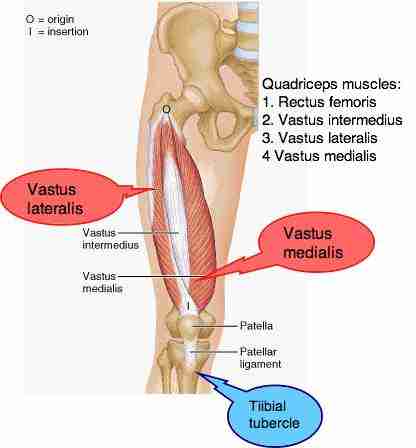
Q-angle, not queue angle! Google has become very strange and won't let webmasters use a capital letter or hyphen.
Stairs become very difficult.
The kneecap transmits the enormous force of the quadriceps muscle in the thigh to the patellar tendon which is attached to the tibial tubercle on the lower leg, straightening the knee, called extension.
Every step, every time you jump, stand up from a chair, go up or down hill, the quadriceps contracts and the enormous forces are directed via the patellar to the tibia enabling you to straighten the knee going upstairs, and stop it bending too much when walking downstairs.
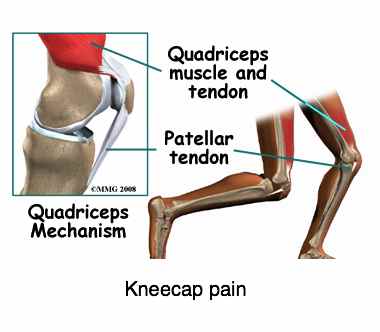
Patello-Femoral arthralgia (= joint-pain)
There are two large muscles in the quadriceps that balance each other: the
- Vastus Medialis
- Vastus Lateralis

If one or the other is weak, then the kneecap tracks to the opposite side causing an excessive rubbing against the sides of the trochlear groove.
If the Vastus Lateralis muscle fatigues faster, then the patella tracks against the medial condyle, and the condition is called Patello-Femoral Arthralgia (PFA). Typically, walking UP stairs hurts.
If the Vastus Medialis muscle fatigues faster than Lateralis, then the patella tracks against the lateral condyle, and the condition is called Excessive Lateral Pressure Syndrome (ELPS). Typically, walking DOWN stairs hurts. The foot should be checked too, because ELPS is associated with foot pronation.
(PS. Forget the terms)
Either way, a roughening of the hyaline artilage begins, resulting in a degenerative joint surface. Arthr-algia = Joint-pain. Pain on walking, of course. That's where COLD HOT THERAPY comes in useful.
Sometimes, the calcium starts being deposited in the joint causing "chondro-calcinosis". Can you spot the calcium crystals being laid down in the joint in this next graphic? COLD HOT THERAPY is perfect for pain control.
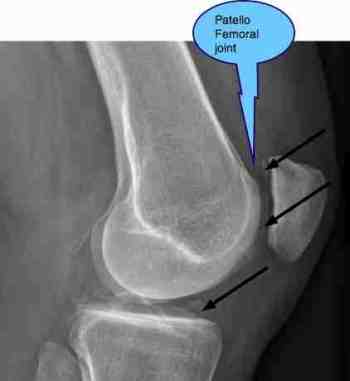
The good news is that these kneecap conditions respond very well to chiropractic. The lady with the knee above is fiftyish and had knee pain for two years. After only 4-5 chiropractic treatments she is dramatically better. Rehab to strengthen the weak Vastus muscle is vital, and sometimes the ankle must be addressed. Foot pronation also causes the lateral tracking of the kneecap.
Ice cold therapy: how good is the evidence?
Chiropractor Dr Mac Auley DC did a literature search; see: Int J Sports Med. 2001 Jul;
A researcher at the Institute of Postgraduate Medicine and Health Science University of Ulster, Dr Mac Auley reported:
Ice, compression and elevation are the basic principles of acute soft tissue injury. Few clinicians, however, can give specific evidence based guidance on the appropriate duration of each individual treatment session, the frequency of application, or the length of the treatment program.
A systematic literature search was performed using the key words ice, injury, sport and exercise.
Temperature changes in muscles depends on
the method in which the ice is applied, how long it is applied, the temperature at the start,
and depth of the fat beneath the skin. This review
suggests that melting ice applied repeatedly using a wet towel for about ten minutes is most the most effective way of icing a muscle.
Continuous application of ice is less effective; repeated applications helps sustain reduced muscle temperature without damaging the skin and allows the skin temperature to return to normal whilst the deep muscle remains chilled.
Muscle function and reflexes are reduced following ice treatment so athletes may be prone to injury for up to half an hour after ice therapy.
So the conclusions are that ice massage is effective for acute conditions, but should not be applied in a continuous manner, but rather in repeated applications of about ten minutes to be most effective, avoiding side effects, and preventing further injury on return to the sportsfield.
My comment: In this abstract concerning cold hot therapy for muscle injuries no mention is made of the difference in applying ice for joint injuries such as a Patello Femoral Pain syndrome where the tissue is non muscular and only a few millimetres below the skin, and a lower back disc injury where the joints involved are are a good 20 to 30mm deep.
So it would seem that your ice cold therapy should be applied more frequently for muscle injuries, but for a shorter time. For joint conditions? If the ice is applied directly to the skin as in an ice massage, compared to over a thin cloth, then certainly for a shorter time.
Ice cold therapy
Ice cold therapy is much safer than taking medication; there are no side effects.
Take a polystyrene or paper cup, fill it with water and place it in the
freezer. When it's completely frozen, tear a little of the cup away
around the rim leaving the ice proud. Perfect for an ice massage.
So, research shows that repeated short applications (around the knee,
perhaps ten minutes, and for deeper tissues such as acute lower back
pain, rather longer, perhaps twenty minutes) of wet ice is best. This
allows chilling of the deep tissues, whilst allowing the skin to again
warm up between applications.
Such an application is messy on the back, perhaps an icepack
in a tea towel for twenty minutes might be a good compromise when
applying your cold hot therapy.
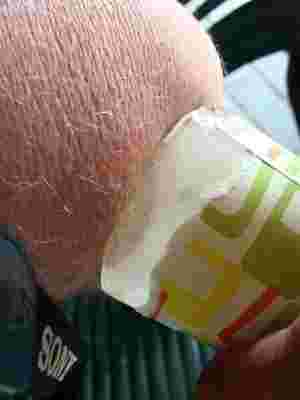
Cold and heat therapy
Cold and heat therapy is immediately available, cost free and has no deleterious side effects.
I like in the practice to use alternating heat and ice therapy since most injuries are more than 48 hours old; actually cold hot therapy. First apply your ice cold therapy with an ice cup or ice pack, and then stand in a hot shower, or use a hot water bottle for a shorter period.
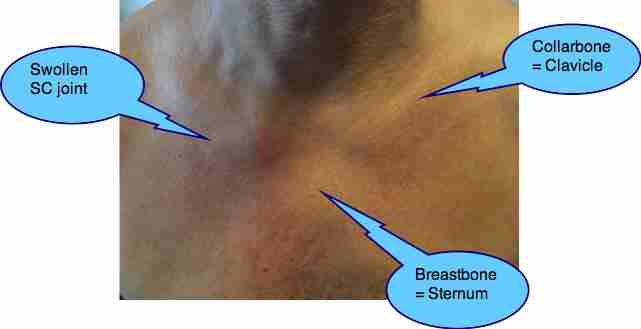
Likewise your ice cup could be used on this swollen sterno clavicular joint, collarbone in this condition called TIETZES SYNDROME which can cause severe breastbone pain affecting either the collar bone or ribs. Done in the shower, alternating cold hot therapy is very effective for joints just below the skin.
Take for example this unedited letter I recently received at Chiropractic Help:
I have bulging discs in my cervical spine and a painful swollen nodule at my costo sternal joint; the analgesics help my back pain, but do nothing for the pain in my rib cage; I have had this disabling pain for seven years.
The doctor keeps presecribing more anti inflamatory drugs and oxycodone that relieves the pain in my back, but no one knows how to treat Tietzes syndrome.
In the beginning my medical doctors thought I was going crazy, and the hospital doctors also.
I got labled as a drug seeker, but no one knows
how to treat imy breastbone pain; nothing seem to relieve the pain even though I was presecribed antiscokics , siezure drugs, and was given shots but nothing relieved the pain unless I was given even stronger medication, and the doctors wouldn't prescribe them.
I do not know which way to turn; it's making me depressed and not even my family seem to be able to grasp the extent of my pain.
For chronic injuries a hot moist pack may be more helpful that ice. It's important not to use heat over swollen or inflammed joints or muscles however as it increases the blood flow and the temperature of the tissue; it will only increase the swelling.
Heat therapy over tight muscles and joints BEFORE exercise is advisable making the tissues more supple and elastic. A hot shower, or a hotwater bottle over a moist cloth for ten to fifteen minutes would be fine, depending on the depth of the tissue.
I'm quite strict about lower back exercises before getting out of
bed, especially for chronic conditions. The tissues are already warm
from a night in bed, curled up under the eiderdown, "onder de veren" as
they say in Holland because, once up and about, my lower back exercises
usually don't get done. But after your shower or bath they might be even
better... if you're disciplined enough to return to your bed for a
minute and a half.
Lower back exercises ...
Chiropractic
Chiropractic is not against the judicious use of medication but we do look for alternatives that do not have the serious side effects of drugs; cold hot therapy is just one of these.
USEFUL LINKS
Return from COLD HOT THERAPY to Patello Femoral Pain Syndrome.
ARTHRITIS AND OBESITY …
Did you find this page useful? Then perhaps forward it to a suffering friend. Better still, Tweet or Face Book it.
